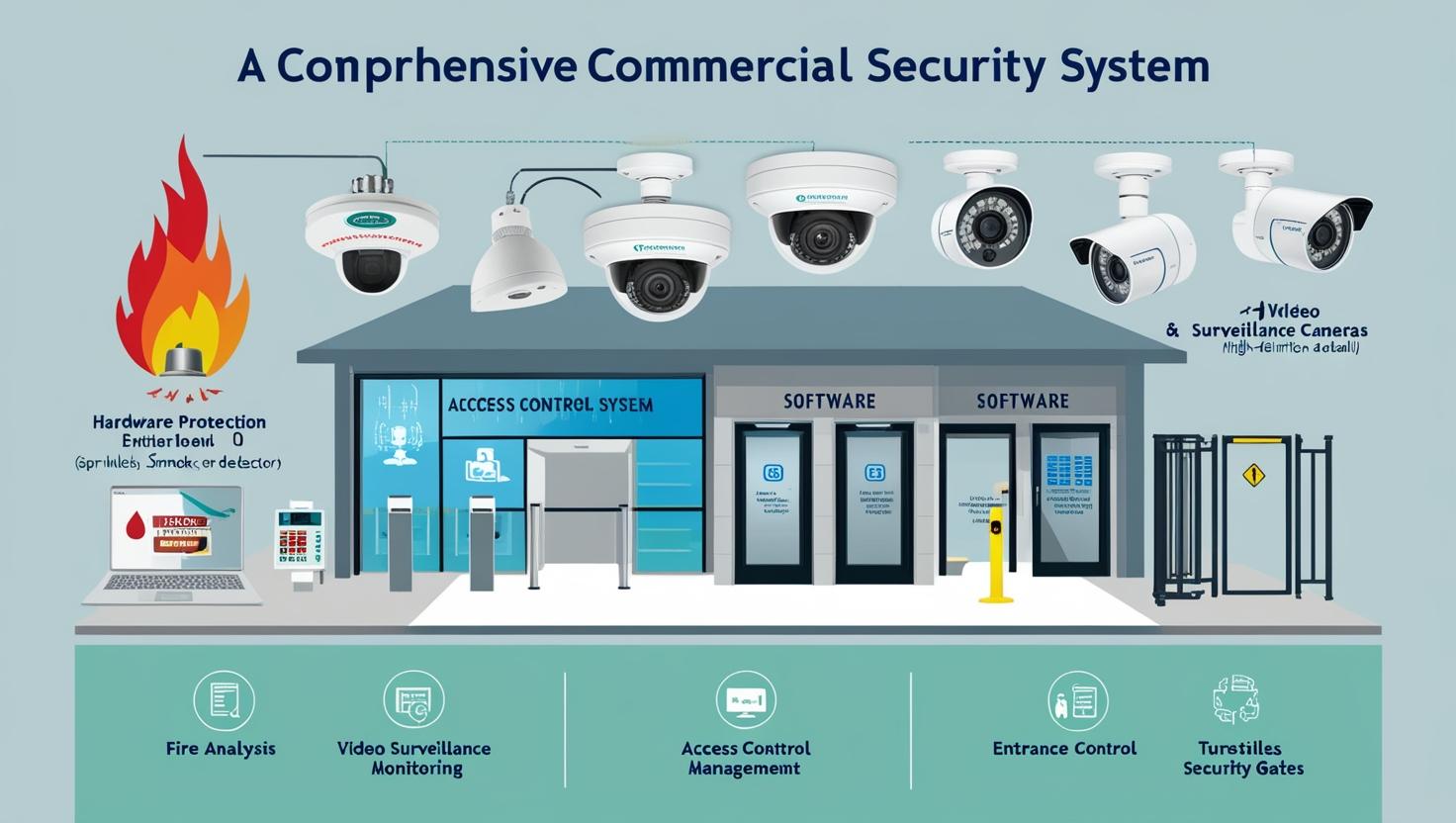The commercial security system market is undergoing a profound transformation driven by the integration of Artificial Intelligence (AI) and the Internet of Things (IoT). As threats to physical and digital infrastructures evolve, traditional security methods are no longer sufficient. Businesses across sectors are turning to intelligent, connected systems that not only monitor environments but also predict, analyze, and respond in real time.
Together, AI and IoT are redefining the capabilities of modern security systems—making them smarter, faster, and more adaptable to a constantly changing threat landscape.
The Shift from Reactive to Proactive Security
Historically, commercial security relied on passive surveillance tools—CCTV cameras, access control systems, and alarm systems—that required manual oversight and reactive responses. Today, AI and IoT have shifted the paradigm toward proactive threat detection and automated incident response.
AI-enabled video analytics can now detect suspicious behavior, unauthorized access, or perimeter breaches in real time, reducing the need for constant human monitoring. Meanwhile, IoT devices such as motion sensors, smart locks, biometric readers, and environmental detectors create a vast network of data points that feed into central security platforms. This combination allows for faster decision-making and a coordinated response across systems.
The global commercial security system industry is estimated to be valued at USD 222.86 billion in 2025 and is projected to reach USD 381.66 billion by 2030; it is expected to grow at a CAGR of 11.4% from 2025 to 2030.
Download PDF Brochure @ https://www.marketsandmarkets.com/pdfdownloadNew.asp?id=234307144

Smart Surveillance and Real-Time Analytics
One of the most significant applications of AI in commercial security is intelligent video surveillance. Advanced algorithms can identify people, objects, vehicles, and abnormal behavior, reducing false alarms and improving situational awareness. Facial recognition, license plate recognition, and crowd analytics are now commonplace in airports, office buildings, manufacturing plants, and retail environments.
These AI-powered systems continuously learn from data, improving their accuracy and adaptability over time. When integrated with IoT sensors, they can correlate visual information with other inputs—such as sound, motion, temperature, or access control data—to provide a fuller picture of any security event.
The Power of IoT in Security Integration
The IoT layer brings connectivity and scalability to commercial security infrastructure. Devices such as smart cameras, door sensors, glass break detectors, and fire alarms can now communicate over cloud platforms and edge networks. This enables businesses to manage and monitor facilities remotely, receive real-time alerts, and integrate data across departments.
For example, if a motion sensor is triggered in a restricted area, the system can automatically activate nearby cameras, lock doors, and notify security personnel—all without manual input. This seamless automation reduces response time and improves the effectiveness of incident management.
IoT also supports predictive maintenance for security hardware by alerting facilities teams before a device fails or loses connectivity, ensuring uptime and performance in critical environments.
Enhanced Access Control and Authentication
AI and IoT have also revolutionized access control systems. Biometric verification methods such as facial recognition, fingerprint scanning, and voice identification offer higher security and convenience compared to traditional keycards or PIN codes. These systems adapt based on user behavior, making it easier to detect anomalies like tailgating or unauthorized entry.
IoT-enabled access control systems can be integrated with broader security platforms, allowing businesses to grant or revoke access in real time, track user movement, and create detailed audit trails. For multi-site enterprises, cloud-based access control offers centralized management and scalability.
Cloud, Edge Computing, and Cybersecurity Integration
As commercial security systems become more data-intensive and connected, cloud and edge computing are playing a growing role in enabling real-time processing, storage, and analytics. AI models can be deployed at the edge—closer to the devices themselves—enabling immediate insights and reducing latency.
At the same time, the rise of connected devices increases cybersecurity risks. Modern security systems must now defend not only against physical intrusions but also digital ones. AI is being used to detect unusual network traffic or access patterns that may indicate a cyberattack, while IoT security protocols are improving device authentication and data encryption standards.
Industry-Wide Applications
The AI and IoT-driven transformation of commercial security is being felt across various industries:
-
Retail: Smart cameras and analytics track customer behavior, prevent theft, and manage crowd flow.
-
Healthcare: Hospitals use biometric access, AI monitoring, and sensor-driven alerts to secure sensitive areas and protect patient data.
-
Manufacturing: Factories integrate AI surveillance with IoT sensors to monitor equipment, control access, and ensure safety compliance.
-
Corporate: Office buildings are adopting touchless entry, occupancy sensors, and AI-assisted visitor management systems.
Future Outlook
The commercial security system market is projected to grow significantly through 2030, driven largely by the adoption of AI and IoT technologies. As these systems become more integrated, interoperable, and intelligent, businesses will continue to benefit from enhanced protection, reduced operational costs, and data-driven insights.
However, challenges such as data privacy, device standardization, and cybersecurity must be addressed in tandem. The industry is also witnessing a shift toward as-a-service models, where businesses pay for security solutions via subscription, reducing upfront costs and enabling faster technology adoption.
AI and IoT are not just enhancing commercial security systems—they are reshaping them entirely. From real-time analytics and automated incident response to predictive maintenance and intelligent access control, these technologies are helping businesses move from reactive to proactive security strategies. As digital transformation accelerates, AI and IoT will remain at the heart of a smarter, safer commercial security ecosystem.
